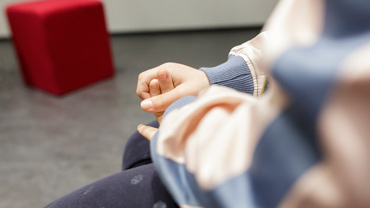Information from the Ministry of Social Affairs and Health and the Association of Finnish Local and Regional Authorities
Quality recommendation for child welfare updated – introducing quality criteria for substitute care and for monitoring it

The Ministry of Social Affairs and Health and the Association of Finnish Local and Regional Authorities have updated the quality recommendation for child welfare. In the same connection, quality criteria was drawn up for substitute care and for monitoring it.
The updated quality recommendation emphasises, even more clearly than before, a work approach based on human relations, conducted on the terms of the child and looking after the rights of the child. The obligation to protect children is best met when the child or young person concerned, those close to them and the social workers trust each other and cooperate.
“The workload of social workers in child welfare services is worrying in many municipalities. However, many measures can be taken to alleviate the situation. Working alone and taking responsibility for difficult issues is a key risk factor with regard to workload. According to municipal assessments, multi-professional team work effectively reduces the workload and is a good way of providing child welfare services in municipalities,” says Hanna Tainio, Deputy Managing Director of the Association of Finnish Local and Regional Authorities.
Employees need enough time for working with children
The recommendation emphasises that the work should be carried out as multi-sectoral teamwork. A multi-professional team combines the support measures into a coherent service package that meets the needs of the child and his or her parents.
Child welfare services are organised in various ways in different parts of Finland. The number of clients per employee depends, for example, on regional and content-related factors and factors related to each client’s service needs. The recommendation proposes that one social worker should not have more than 25 child welfare clients. This complies with the proposal by Aulikki Kananoja on staffing levels in child welfare services.
“Child welfare workers carry out responsible work. They must have a real chance to encounter their clients and help. We invest in child welfare both through quality work and by enacting minimum staffing levels for child welfare services. It is worthwhile to invest in child welfare because early support can make heavier corrective measures unnecessary,” says Krista Kiuru, Minister of Family Affairs and Social Services.
According to the Government Programme, minimum staffing levels for child welfare services will be laid down by law. In 2022, one child welfare professional may have a maximum of 35 children as clients according to the law, and in 2024 a maximum of 30 children.
Recommendation primarily drawn up for professionals and decision-makers
The quality recommendation for child welfare services guides the child and family-oriented child welfare work and its organisation in Finland. Knowing the contents of the quality recommendation is necessary for all professionals and managers within child welfare services as well as for public officials and elected officials who decide on resources. The recommendation is also intended for children and families and those close to them as it tells what can be expected from high-quality child welfare services.
The recommendation describes the principles guiding the child welfare work and gives the actual recommendations categorised as follows: inclusion, service system, professionals and work communities in child welfare services, assessment of the need for services, and quality criteria for substitute care and for monitoring it.
The recommendation emphasises that all evaluation work at different stages of the child welfare process is carried out under official responsibility.
Introducing quality criteria for substitute care and for monitoring it
The quality criteria for substitute care lay down a common foundation for high-quality substitute care that is planned individually for each child. The criteria emphasise that the wellbeing of the individual must be ensured although the child will be growing up in a group and community of children.
The recommendation defines 12 criteria for substitute care and describes the responsibilities of different stakeholders in implementing the criteria. All stakeholders organising, acquiring, providing or monitoring substitute care shall take account of these quality criteria.
The Ministry of Social Affairs and Health and the Association of Finnish Local and Regional Authorities issued their first quality recommendation for child welfare in 2014. The foundation for the contents of the first recommendation is still topical. During the last four years, child welfare services have been developed in broad-based cooperation with municipalities, regions and national stakeholders, and this work has been taken into account in the updated quality recommendation.
Inquiries:
Marjo Malja, Senior Ministerial Adviser, Ministry of Social Affairs and Health, tel. +358 2951 63581
Susanna Hoikkala, Ministerial Adviser, Ministry of Social Affairs and Health, tel. 0295163482
Aila Puustinen-Korhonen, Senior Specialist, Association of Finnish Local and Regional Authorities, tel. +358 50 344 6884
The quality recommendation will be published in English as soon as possible.

